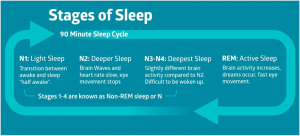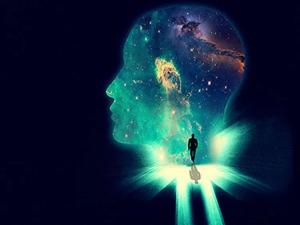Have you ever realized that you were dreaming while you were actually dreaming? Have you ever managed to gain control over your dream narrative? If so, you can call yourself a Lucid Dreamer!
What is a lucid dream?
A lucid dream is defined as a dream during which dreamers, while dreaming, are aware that they are dreaming. That’s what makes a lucid dream different from a hallucination — your physical body is in deep sleep and can’t actually feel anything you do, even though you’re aware and have control. Lucid dreaming is certainly an attractive and fascinating prospect — being able to explore our own inner worlds with full awareness that we are in a dream state is intriguing and has an almost magical flavor about it.

In fact, experts believe that lucid dreams resulted in many of the greatest inventions like:
- Alternating current generator -Tesla
- DNA’s double helix spiral form -James Watson
- The sewing machine -Elias Howe
- Periodic table – Dimitri Mendeleyev
- The idea for Google – Larry Page
For instance, a study conducted in Brazil survey indicated that 77 percent of the respondents had experienced lucid dreaming at least once.
How do Lucid Dreams occur?
Like most dreams, lucid dreaming will typically occur during Rapid Eye Movement (REM) sleep where our brain remains active and energetic and our voluntary muscles gets paralyzed but eye functions and reacts to images (it may be a protective move so that you don’t react on your dreams).
Lucidity arises from a special part of the brain. A neuro scientist, J Allan, has theorized about what happens in the brain when a dreamer becomes lucid. First, we recognize that we’re dreaming, and this stimulates the dorsolateral prefrontal cortex, responsible for self-awareness and working memory. This area is usually deactivated during REM sleep – which explains why it is not typical to realize that we’re dreaming.

Benefits of Lucid Dreaming
“Lucid dreamers can develop their skills so they can better act on demand or even find creative solutions to problems in their dreams,” says Breus, an expert. When we have a lucid dream, we explore our creative side and also experience our fears right in the moment.Many people find relief from their phobias, anxiety and depression after a lucid dreaming experience. It’s quite surprising to know that we can even train ourselves to have a higher pain tolerance by manipulating our reaction. Some of the other benefits include:
- Access your subconscious
- Interpret your dreams
- Conquer your fears
- Stop nightmares
- Have fun
- Practice for real life
- Solve a problem
Lucid Dreams and Meditation
There is a proven scientific link between meditation and lucid dreams. Meditation helps us to reach blissful states of relaxation and enter altered states of consciousness whenever we want to.
Tibetan Dream Yoga is the original Eastern form of lucid dreaming. Tibetan Buddhist Monks Practice Dream Yoga. Just like lucid dreams, the aim of Dream Yoga is to awaken the conscious self from within the dream state, which they call “apprehending the dream”. However, they have more esoteric goals in mind. Their aim is to harness the power of the conscious dream state .
Lucid Dreaming- An Art
The degree to which a person can influence their dream if they are lucid while dreaming varies to a great extent. Some people may simply wake up immediately upon realizing that they had been dreaming. Other people may be able to influence their own actions within the dream, or parts of the dream itself. For some people, it occurs spontaneously. However, others train themselves to start dreaming lucidly, or to become better at it.

Train yourself to experience a lucid dream
Lucid dreaming is absolutely possible for everyone, but you’ll need to train your brain first. It isn’t hard to do, but it will take some dedication, practice, and patience. There’s no luck, skill or intelligence level required; it’s simply a matter of setting your mind to it and practicing the techniques until you get results. Frequent reality checks should be done which include:
- Hand against a wall: When we place our hand against the wall, either experiencing the wall to be hard or our hand passing through the wall decides our state of reality or dream.
- Rereading a line of text: In reality, if we read the text on a poster, for instance, it will stay the same when we reread it. In a dream, however, the text will constantly shift.
- Waking back to bed: it requires setting an alarm to wake up the sleeper after about 5 or 6 hours of going to sleep. Once awake, the person should aim to remain awake for a while, before going back to bed. This technique is supposed to immerse the sleeper immediately into REM, the phase of sleep during which they are more likely to experience a lucid dream.
In fact, there has been a lot of advancement in the science of using technology and sound to induce a lucid dreaming state.Playing off our natural brainwave patterns, sound can influence certain states of awareness and make lucid dreaming more likely.

Misconceptions
Lucid dreaming is a wonderful self-exploration tool and is completely safe. In fact, it’s a great way to experience far out worlds and ideas. As shown in the movie “Inception”, no one has ever gotten stuck in a dream or done anything dangerous while lucid dreaming. Also, most people believe that it would be a tiresome day after lucid dreaming. But they wake up feeling refreshed and rejuvenated after a lucid dreaming experience. This happens because it takes place during a very restful phase of sleep that lets our body recover.
It’s quite surprising to know that we can actually taste food in our lucid dream since all sensory experiences are merely neurons firing off in your brain!!
There are many funny experiences narrated by lucid dreamers. While some tried to overcome their fears creatively, the rest had made the complete use to intuitively come up with hilarious stories.




Comments
Hi everyone Your way of explaining everything in this post is really fastidious, every one be capable of easily know it, thank you